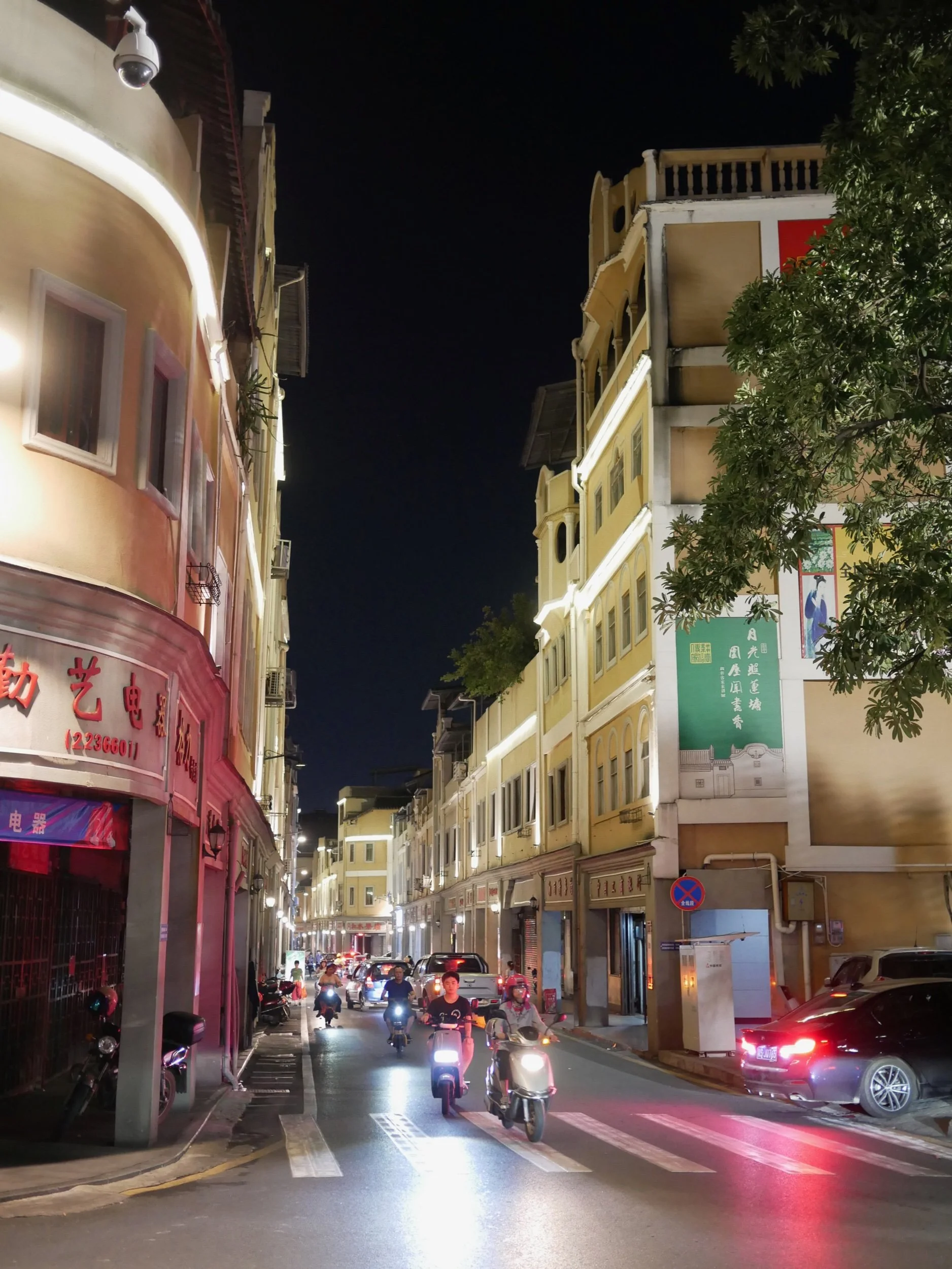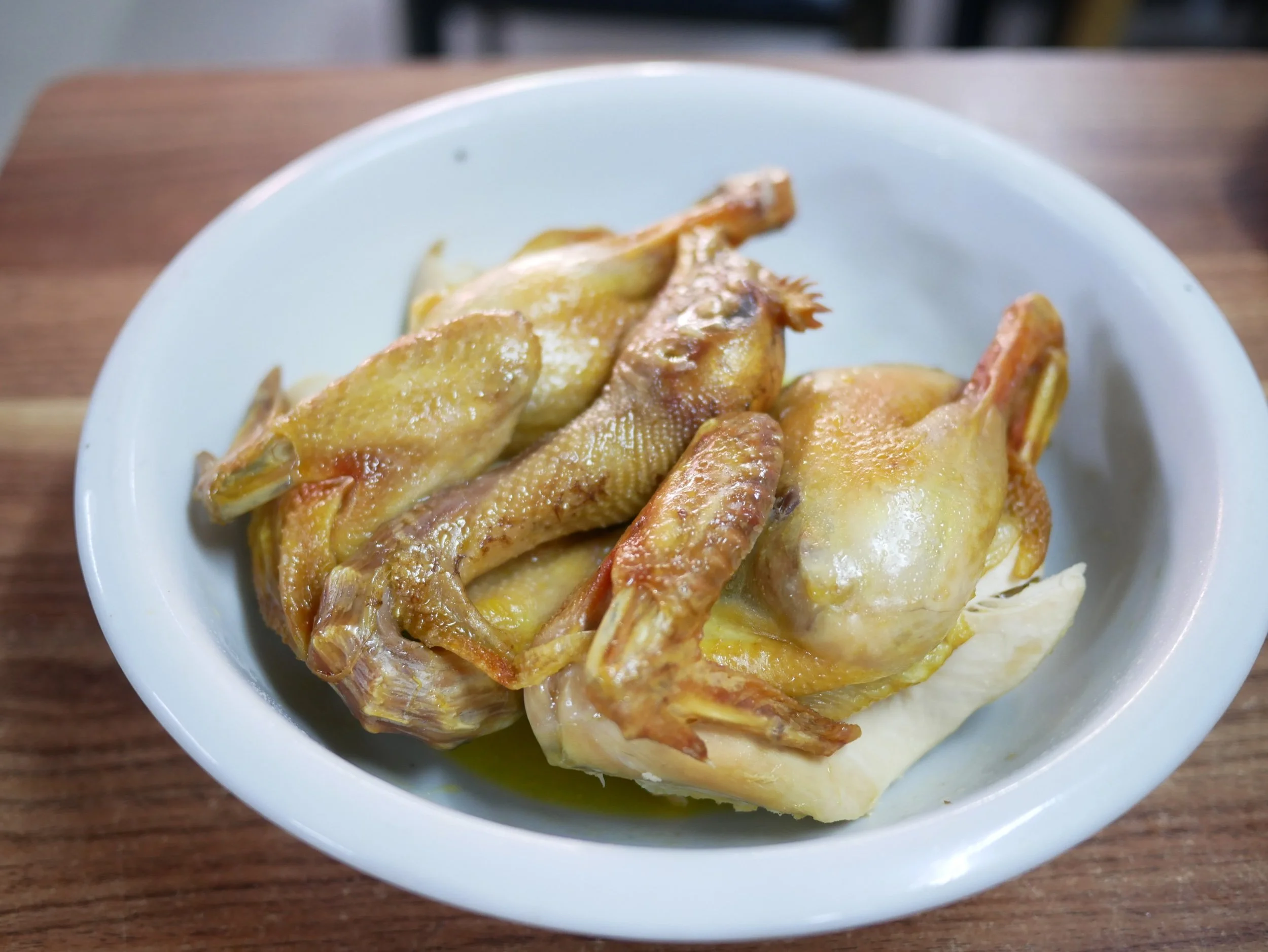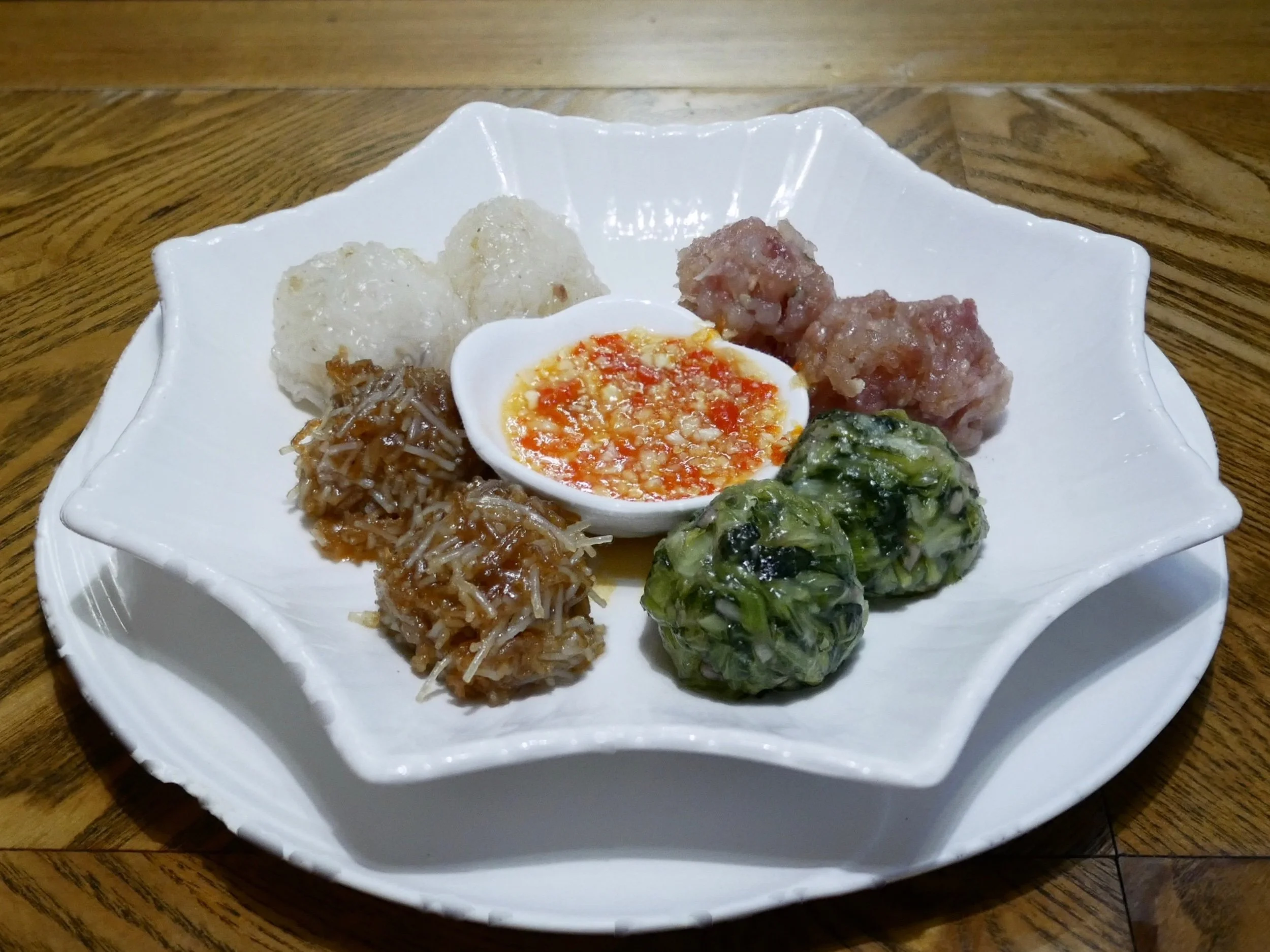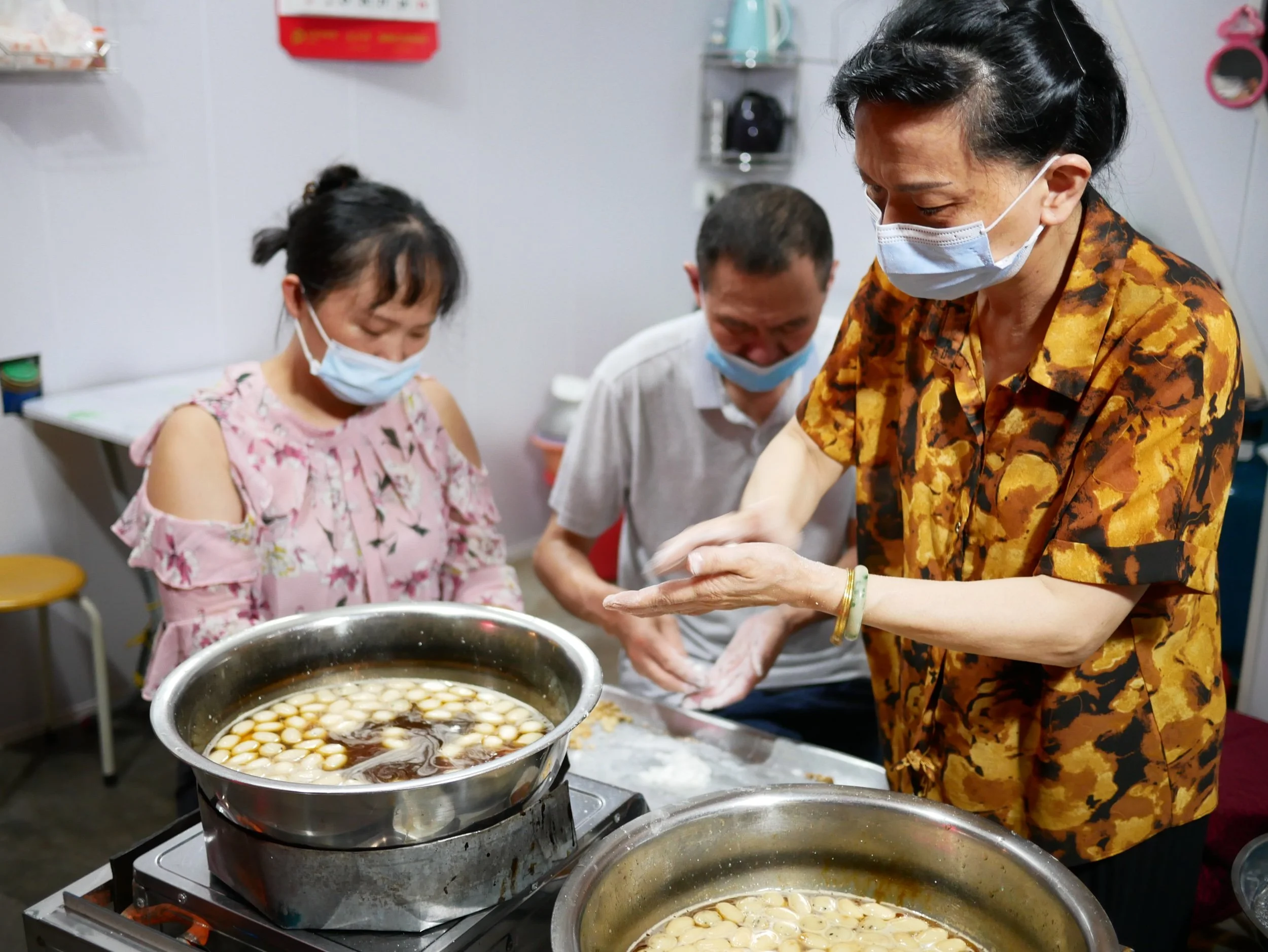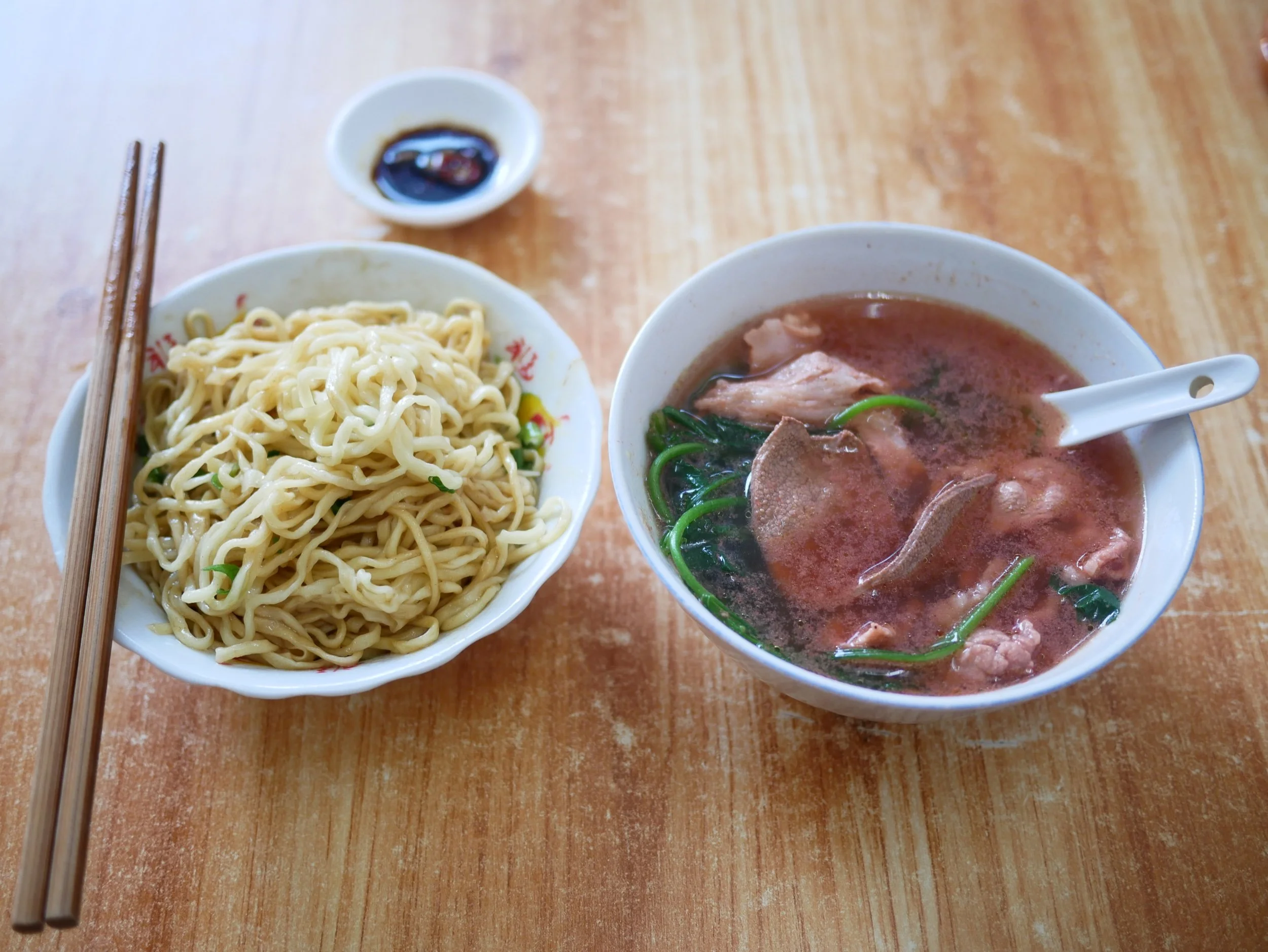Meizhou (梅州) Impressions, and a visit to the China Hakka Museum
The morning of my last day at the Fujian tulou (福建土樓), the Changdi Inn’s innkeeper’s brother drove me to my next destination: Meizhou (梅州) in Guangdong province (广东省). The innkeeper asked if I was going to the high speed rail station, I supposed because Meizhou is not really on many people’s list of tourist destinations. A lot of my acquaintances did not know about Meizhou either, when I told them I was visiting. I was interested to visit Meizhou because my grandfather on my mother’s side of the family hails from here, and I was curious to trace these roots!
The drive from the Hongkeng tulou cluster (洪坑土樓) to my hotel in Meizhou took just an hour and a half. Which means that Meizhou is actually a pretty good jumping off point or end point to visit the Fujian tulou. Along we way, we passed by this very colorfully decorated thermal power plant of Sanhezhen (三河镇), showing key elements of Hakka culture of this area!
Meizhou’s big claim is being the world capital of the Hakka people; on the bridge below, the four words on the right say just this: shijie kedu 世界客都.
The Meijiang river (梅江) is a defining feature of the city. Apparently the old part of the city is on the north side of the river, and the newer part is on the south side. They’ve turned the river into a kind of light show at night.
Here’s one of Meizhou’s attractions, Thousand Buddha Pagoda (千佛塔), lit up at night.
Further along on the eastern part of the city is this bridge composed of boats.
I think in the olden days, these would be actual boats tied together (and in Chaozhou, there is a bridge like this, that I would see in a few days).
My hotel can be seen on the left side, with the purple words.
On the other side of the bridge was a big plaza, full of activity (including lots of kids rollerblading!) at night.
Vendor of big snacks.
During the day, the high was in the 100s, so it was understandable that this same scene was quite deserted during the daytime!
Here was a lone fisherman.
The skyscraper with the cylinder on top (a formerly rotating restaurant) is a hotel.
I walked from my hotel to the China Hakka Museum (中国客家博物馆) across that boat bridge.
This was the only place during my visit to Meizhou that I experienced any kind of crowding, despite it being the October holiday peak season. And even so, I only had to wait about half an hour for timed entry into the museum. Admission is free!
I really enjoyed this museum, especially learning about the unique Hakka buildings. This was a great learning experience after coming from the Fujian tulou!
Here’s a summary of the main different types of Hakka buildings. It turns out that the tulou that I saw during my last few days were just one of these four, the Longyan Earthen building (龙岩土楼).
There are also octagonal tulou!
Also D-shaped buildings.
This Round-Dragon House type (围龙屋) I think can be seen in the Meizhou area, although I don’t think I saw any myself.
I think this kind of rectangular tulou might be from the Jiangxi area.
There are also Chinese and Western fusion style Hakka buildings (not called tulou anymore, because they’re not made from earth).
Just outside the park where the China Hakka Museum is, are some historic-looking buildings. Are these being preserved?
This D-shaped pool looked similar to the ponds in front of the Round-Dragon House (围龙屋) archetype!
Walking a little further deposited me on the Jiangbian lu (江边路, meaning “Riverside Drive”). I had just visited this road the day before, because my grandfather’s ancestral home is along here! The Meijiang river is literally just to the left of this wall of buildings on the left; it seems such a pity that the river is inaccessible to the public and walled off in this way.
A big northwest of that road are the “old streets” of Meizhou (每周古街).
The way they are so evenly decorated made me think this was constructed just for tourists, but a taxi driver and my driver to Chaozhou both insisted that these streets have always been like this, only with a recent coat of paint.
I don’t know where this kind of shophouse architecture first originated, and how it spread, but I’ve seen this kind of architecture now in Xiamen and Meizhou, besides Singapore where I originally came across it.
With the lighting in these horizontal stripes, things look particularly uniform.
Not all of this part of town is done up in this way…
…things start to peter out,…
…the closer one gets to…
…Riverside Drive 江边路. This complex looks downright deserted, as is a newer construction just next to this.
And that wall of buildings blocking access to the banks of the river was also quite the opposite of lively. Lots of pomelo stores.
A few pomelo stores open past 10pm.
Besides those streets, Meizhou has a lot of these kinds of apartment buildings, which create their own kind of wall effect.
I find it interesting that even the top stories of these buildings have bars to keep intruders out.
They are made of very fine metalwork though, so the appearance is more like a delicate birdcage, rather than a jail.
Just walking around, I liked seeing the residents of the city exercising, playing cards, socializing.
I wish the riverfront could be activated more, though.
It’s a cool feature of the city.
I do like on the southern side of the river, they have a running/walking track. I was also quite impressed to see the signage marking this as a Guangdong Greenway path (广东绿道) path, and to see this signage later all the way on the other side of the province in Guangzhou.
On a final note, doing PCRs was very easy here. The location closest to my hotel was just across the street, behind the shopping mall.
One registers for a QR code, and then they scan that code, and your results are later uploaded into their system (into another code). In Meizhou, my test was free.
Meizhou is not a big tourist destination, and perhaps because of that, I really enjoyed visiting this city. I was able to meet relatives, and visit the ancestral home, imagining what it would have been like to grow up here at the start of the 20th century. This was so meaningful. Today, Meizhou is a Tier 4 city, according to China’s mainly economics-based indicators. The uncle who is now living in the ancestral home said that Meizhou is poor, and other relatives told me how small it was. Coming from the US, Meizhou could still be considered a large city! I just liked experiencing a different Chinese city, with its own local culture and landscape.
